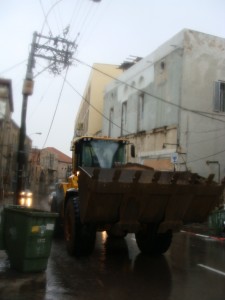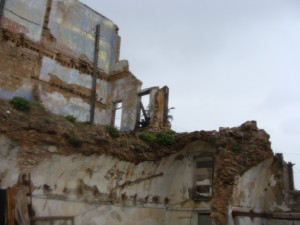 Souciant, April 6, 2011
Souciant, April 6, 2011
Sometimes I’m not sure what to call her. Is it Yafo? Or Jaffa? Then there is the old Arabic nickname, Urs al-Bahr, Bride of the Sea. Each word has its history.
And each has its fate.
If things had gone according to plan—the UN’s 1947 Partition Plan that is—Jaffa would have been part of a Palestinian state. But there was a war here, and there was a nakba, and the Bride of the Sea ended up inside of Israel, alone. In 1950, the municipality of Tel Aviv annexed her and (as husbands sometimes do) gave Jaffa a new name, a Hebraicized one: Yafo.
I took these photos while I was working on a story about gentrification in Yafo/Jaffa. It was a rainy day and I was, characteristically, unprepared for the weather. My lens kept getting wet. While I found this mildly irritating at the time, when I got home I was pleased with the aesthetic result—I felt like I was looking at this once hopeful Bride of the Sea through thick eyelashes, heavy with tears.
And, besides gentrification—which endangers low-income inhabitants of the area, regardless of religion or ethnicity—there is much to mourn. An influx of religious-nationalist Jewish settlers threatens the already uneasy relationships in this so-called mixed city. Some have moved into the area. Others come from the West Bank to march through the neighborhood, to make their presence known. It’s worth noting that it’s not just Yafo/Jaffa’s Palestinian residents that are concerned about these settlers—secular Jews have expressed worry and distress about the trend, as well. 
I see these histories in Jaffa’s arched windows, in her crumbling stone walls, in the buildings that have been ripped out or torn apart, in the doorways that lead to nowhere, in the doors that stand in open air.
And I see Yafo’s fate in the bulldozers that growl up her streets, in the cranes that hover over her sky.
Photos: Mya Guarnieri. A bulldozer making its way through Jaffa/Yafo; a destroyed building with Ottoman-era architecture visible in the remains